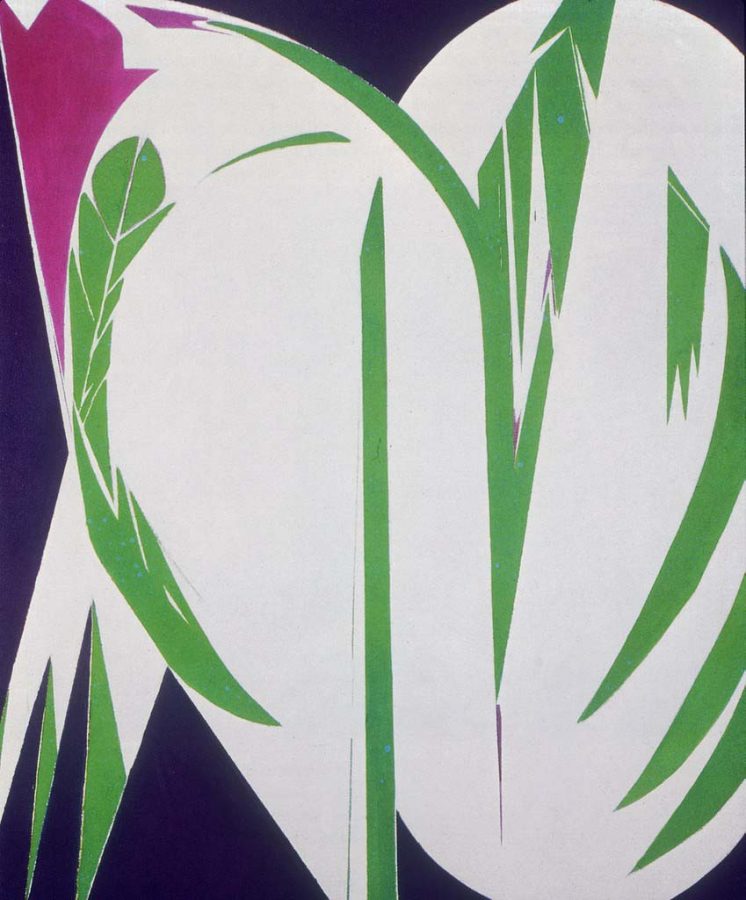The Arts Beyond Hotchkiss: Exhibition & Theatre Reviews
Epic Abstraction: Pollock to Herrera, at The Met
Creator: Krasner, Lee, 1908-; Date: 1972; Material: oil on cotton duck; Measurements: 82×69
With rooms filled with works of Abstract Expressionist artists Jackson Pollock, Willem de Kooning, and Mark Rothko, The Metropolitan Museum of Art brings to the world an exhibition of many art connoisseurs’ dreams.
On view since December 17, 2018, “Epic Abstraction: Pollock to Herrera” features the museum’s collection of Abstract Expressionist and Contemporary artworks, along with a selection of loans and promised gifts. To add to the excitement, beginning on June 24, 2019, additional artworks, including those of Lee Krasner, a specialist in collage and wife of Pollock, and Frank Stella, a leading figure of the Minimalist art movement, were added to the show. Although “Epic Abstraction” represents the cosmopolitan diversity of abstract art by featuring a variety of artists, many artworks featured in the show were rather weak embodiments of the artists’ abstract expressions. The show’s diversity is an impediment to its theme.
The diversity of artists present in this show is commendable. The inclusion of female artists such as Joan Mitchell and Bridgit Riley, as well as artists of various nationalities, including Cuban artist Carmen Herrera and Japanese artist Kazuo Shiraga, widens the scope of the exhibit. Specifically, Shiraga’s colorful impastos, thick layers of paint that he often applied with his hands and feet, in “Untitled (1958),” help him convey the horrors of World War II. Mark Bradford’s bold use of layers of glued monotone paper in “Duck Walk (2016),” a socially grounded work that uses store-bought materials, reflected Bradford’s understanding of African-American identity through everyday life. This variety creates a beautiful juxtaposition of media, sizes, and colors that transcends gender, nationality, and time.
However, despite the laudable diversity and the presence of many well-known names, some artworks featured in “Epic Abstraction” are unrepresentative of the Abstract Expressionism movement, making the museum’s collection of abstract art inferior to its collections of American Romanticist, Impressionist, and post-Impressionist art. For example, Joan Mitchell’s “La Vie en Rose (1979),” though spectacular, is rather decorative and serves as a weak example of Mitchell’s emotional intensity and spontaneous aesthetic. It is as if a curator had represented Picasso’s entire artistic career with “Boy with a Pipe” and “Family of Saltimbanques.” Although these paintings are spectacular representations of Picasso’s rose period, they do not reflect Picasso as an artist who underwent other periods of distinct styles of painting, including his blue period and cubism era.
Additionally, compared to concurrent, private exhibits of Joan Mitchell and Frank Stella in David Zwirner and Marianne Boesky’s galleries, “Epic Abstraction” does not convey a coherent theme or message. While the nature of abstract expressionist art is dissonant and rarely logically coherent, the diverse range of artists in this show results in a sense of disconnect. Thus, while the inclusion of marginalized artists is a unique aspect of this show, it sacrifices thematic unity for artistic diversity.
The show’s failure to fully embody the artistic movement and converge on a common theme will likely leave its audience with a blurred impression of Abstract Expressionism and its importance in the contemporary art world.






